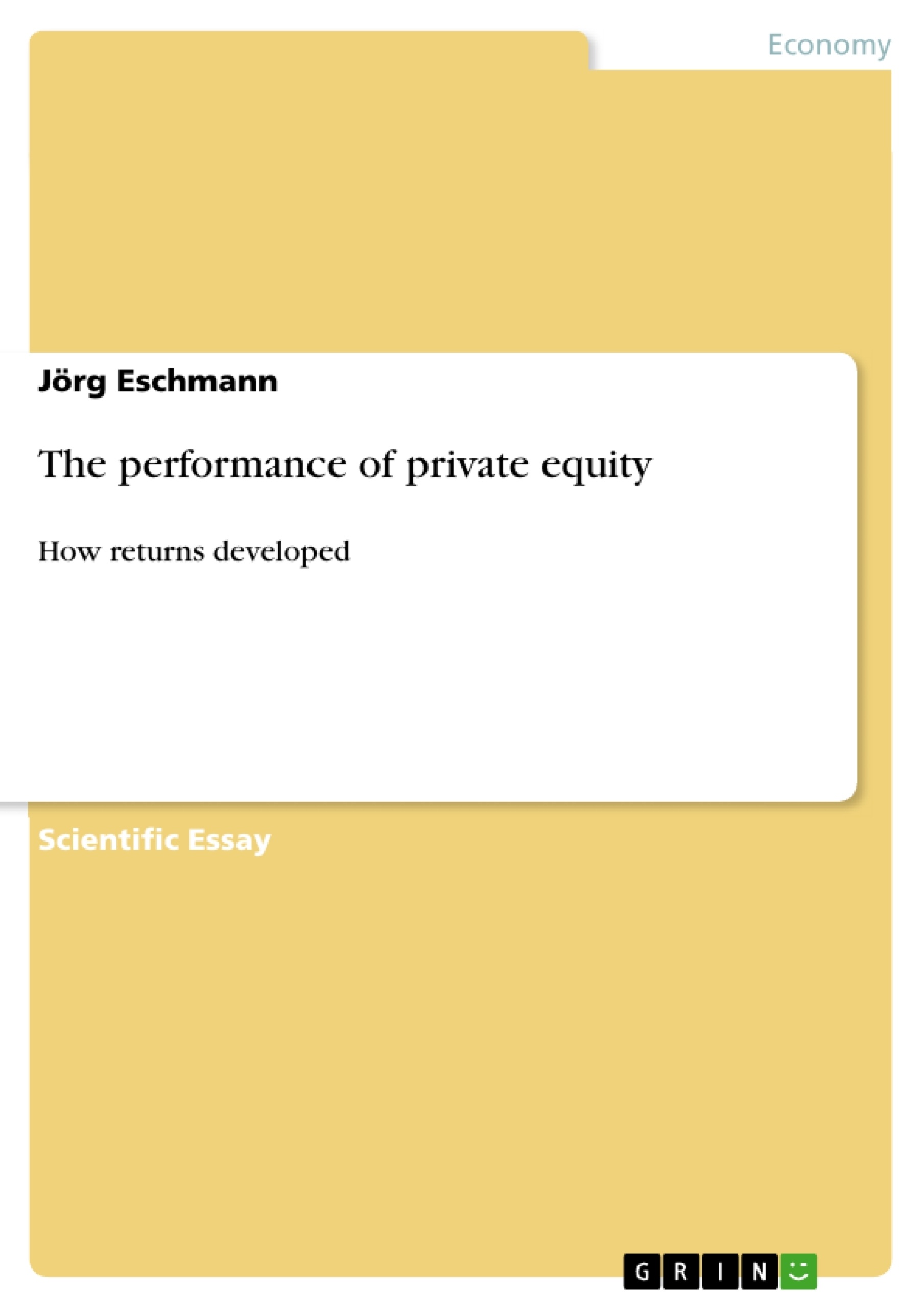The European private equity market had achieved a considerable volume until 2008. Reasons for increasing the volume can be seen in the favourable economic development, low inflation and strong competitive pressure on the part of financial intermediaries. These led to falling swap spreads on the financial markets and increased the investors’ risk tolerance.
Then, in September 2009, the investment business was depressed. The dreariness in the business with private equity participations or buy-outs could already clearly be read in the half-year figures on the market. The amounts invested also declined by just over one third.
Due to a lack of awareness, private equity is still frequently associated with high risk.
Investing in an individual company can sometimes be fraught with risk. Since private equity funds work in a highly specialised way and concentrate on specific sectors or industries, the investment in a single private equity fund can also be risky. The risk of default of an umbrella fund with investments in approx. 20 or more target funds, however, is very low due to broad diversification.
While additional costs are incurred for the investor for the services provided by the umbrella fund, the expected return is still clearly double-digit, even after subtracting these costs.
The average annual return on private equity is regularly 3 to 5% above the average annual yields of stock investments. Recent studies provide evidence that companies that were sold by private equity investors achieved an annual growth in value of 24% to 29% - comparable listed companies managed added value of only nine percent.
Private equity investments are investments in not listed companies with a high risk of default, low fungibility and transparency. A higher return on the investments is inevitably necessary – and feasible.
Inhaltsverzeichnis (Table of Contents)
- Development of the private equity market volume
- Situation of the private equity market in 2009-10
- The performance [= "return"] of private equity
- Features of the returns of private equity funds
- Conclusion: Risk structure of private equity
Zielsetzung und Themenschwerpunkte (Objectives and Key Themes)
This work explores the development and performance of the private equity market, analyzing the factors driving market growth, the impact of economic conditions, and the evolution of investment strategies. The objective is to understand the dynamics of private equity returns and the risks associated with this asset class.
- Growth of the private equity market
- Impact of economic factors on private equity performance
- The role of leverage and debt in private equity transactions
- Trends in private equity transactions and investment strategies
- Risk and return characteristics of private equity
Zusammenfassung der Kapitel (Chapter Summaries)
- Development of the private equity market volume: This chapter examines the growth trajectory of the private equity market, highlighting the significant volume of investments in both Europe and the US. It analyzes the reasons behind this growth, including favorable economic conditions, low inflation, and increased risk tolerance among investors.
- Situation of the private equity market in 2009-10: This chapter focuses on the impact of the financial crisis on the private equity market, particularly in Germany. It describes the decline in transaction activity and investment volumes, highlighting the challenges faced by private equity firms in securing financing and executing deals.
- The performance [= "return"] of private equity: This chapter introduces the concept of private equity umbrella funds and discusses their role in providing access to private equity investments for a wider range of investors. It also explores the factors influencing the performance of private equity investments, including the impact of leverage and the timing of exits.
Schlüsselwörter (Keywords)
Private equity, market volume, investment strategies, leverage, risk, return, financial crisis, economic conditions, transaction activity, umbrella funds, investment performance.
- Quote paper
- Jörg Eschmann (Author), 2010, The performance of private equity, Munich, GRIN Verlag, https://www.grin.com/document/162785



